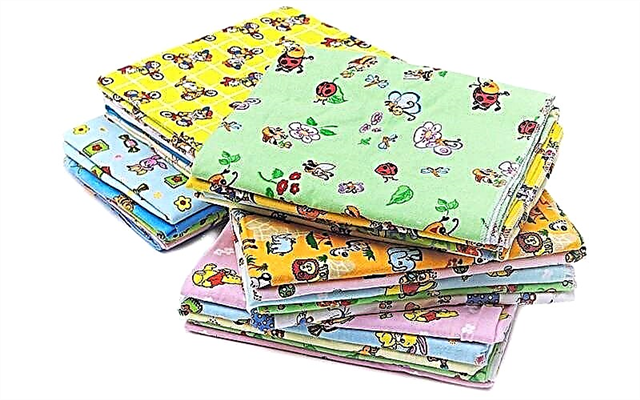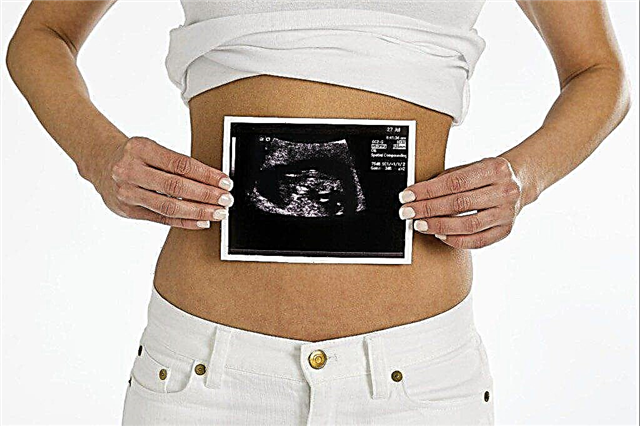Parents have to deal with such a diagnosis as dropsy of the testicle in a child or hydrocele quite often. Most often, this diagnosis is made in the hospital or immediately after discharge from it. But what does it mean? How does it manifest? What symptoms are typical for it? Is it necessary to "fight" with it, or is this disease incurable? Not all parents know the answers.
Why does testicular dropsy form in boys?
Literally from Greek, the term is translated as "swelling of fluid (water)" or "hernia from water."
Dropsy of the testicle (hydrocele or dropsy of the membranes of the testicle) is formed due to the accumulation of serous fluid between the membranes of the testicle, this contributes to the growth of the size of the scrotum, and sometimes the difficulty of urinating. This disease can be either congenital or acquired.
Dropsy of the testicles in newborn boys is quite common. The frequency of its occurrence during this period is 9-10%, and in adult men, acquired hydrocele occurs in 1% of cases. The volume of serous fluid in this disease can vary from 15 ml to 250 ml, and sometimes up to two to three liters.
The main causes of the formation of dropsy of the testicle
According to some parents, a factor contributing to the development of dropsy of the testicle in their son is diapers. So, it is important to note that they do not affect its development in any way.
The birth of a baby with congenital hydrocele is promoted, first of all, by embryological disorders. By the twenty-eighth - twenty-ninth week of pregnancy, the testicles descend into the scrotum and the vaginal process of the peritoneum moves into it.
If this process proceeds physiologically, then the anterior part of the process is closed, and from the posterior part, the sheath of the testicle is formed. But if this process is disturbed, and the vaginal process of the peritoneum is not overgrown, then the scrotum and abdominal cavity communicate, as a result of which the peritoneal fluid enters and accumulates in the membranes of the testicle.
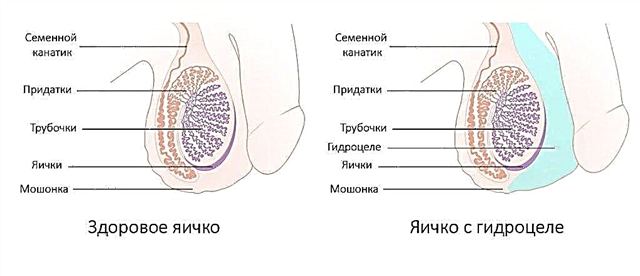
Which doctor should you run to if you see a swelling of the scrotum on one or both sides of your baby? There is only one answer - first of all, you need to go to the pediatrician, and he, if necessary, will send you to the proper specialist.
The peculiarity of the inner membrane of the peritoneal process is the ability to independently produce serous fluid (it is necessary for lubricating and moving the testicles in the scrotum). If its production and absorption are disturbed, physiological dropsy occurs.
Congenital hydrocele can form when:
- threatened miscarriage during pregnancy;
- prematurity;
- burdened heredity (in the male line);
- birth injury;
- the presence of a pregnant woman of bad habits (smoking, alcoholism, etc.);
- cryptorchidism;
- abuse during pregnancy of medications that have a teratogenic effect;
- hypospadias.
Acquired hydrocele occurs when:
- acute and chronic inflammation of one or two testicles, as well as its appendages (examples are: orchitis, epididymitis, orchiepididymitis, etc.);
In the case of a large volume of fluid in the baby's scrotum, not only his general condition is disturbed, but also his physical activity decreases.
- scrotal injuries and tumors;
- tumor-like formations in the scrotum;
- torsion of the testicle;
- severe heart failure;
- ascites;
- gonorrhea;
- tuberculosis;
- complicated operations of the scrotal area (for example, with an inguinal hernia, etc.).
With a hydrocele, a child must be examined by a surgeon and under his supervision.
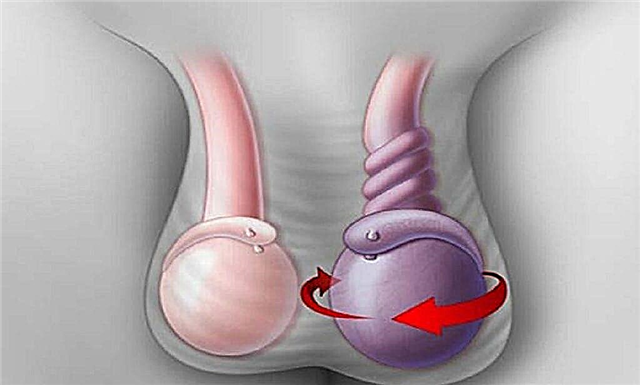
Changes in the organ itself
The appearance of a hydrocele contributes to a change in the appearance of the groin, both in boys and in men. The scrotum increases in size (it becomes pear-shaped, the base is turned down) due to the accumulation of fluid in the testicular membranes. If the spermatic cord is also susceptible to dropsy in a child, then the swelling also occurs in the region of the inguinal canal (it looks like an "hourglass" or multicameral tumor).
The first "bell" of dropsy of the testicle is a sharply enlarged scrotum on one side, less often on both.
If the baby has a congenital hydrocele, then in most cases the appearance of anxiety, sharp soreness (more often during a cough), a tense sausage-like formation in the scrotum, as well as vomiting, flatulence, and stool retention are characteristic.
On palpation of the formation, a smooth, fluctuating surface, of a dense elastic consistency, most often painless, is felt.
This disease can occur as a concomitant pathology, for example, with an inguinal hernia.
How is testicular dropsy classified?
Hydrocele is classified depending on the severity of the process, the side of the lesion and the genesis of the disease.
According to its genesis, it can be:
- congenital, but in due time it is communicating and non-communicating;
- acquired, which proceeds as primary (idiopathic) or secondary (symptomatic).
Depending on the nature of the disease, hydrocele is:
- sharp. It develops in a couple of hours due to the inflammatory process. Characterized by pronounced pain in the groin area;
- chronic. Dropsy of the membranes of the testicles occurs gradually (over several weeks or even months). Soreness does not arise.
The longer the process, the greater the likelihood of complications.
Depending on the side of the lesion, the disease is:
- left-sided;
- right-handed;
- bilateral.
With this disease, in adult men, erection may be impaired and discomfort may appear during intercourse.
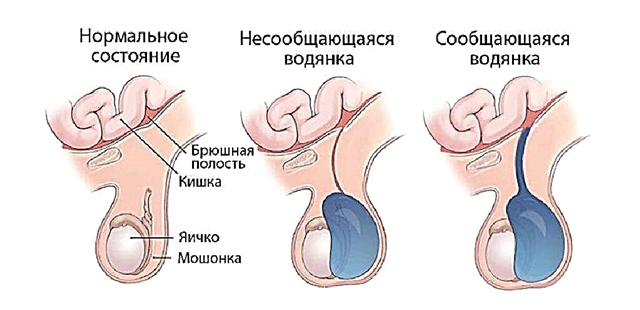
Symptoms of the condition
With a hydrocele, the scrotum increases in volume (it can hang down to the knees, since the amount of fluid can be several liters). It changes its density, as well as its shape (the formation becomes elongated, slightly pointed in one place). The skin over the formation remains mobile. The patient may complain of a feeling of heaviness, a slight increase in body temperature.
Dropsy of the testicle in newborns
If the baby has an acute form of hydrocele, there is a possibility of hyperemia (redness), increased body temperature, chills, weakness, uncomfortable and painful sensations in the scrotum.
Dropsy of the testicles in newborns can occur both on one side and on two (it depends on what shape the scrotum will be). Often this disease at this age is combined with an inguinal hernia.
It is a fairly common occurrence. Painful and uncomfortable sensations at this age, with this type of hydrocele, mostly do not occur.
There is no need to operate early on hydrocele in young children, as it can disappear on its own.
Dropsy of the testicle in boys under three years of age
Dropsy of the testicles in boys under three years of age most often occurs due to the threat of miscarriage during pregnancy, birth injury, prematurity, cryptorchidism, hypospadias, ascites, etc.
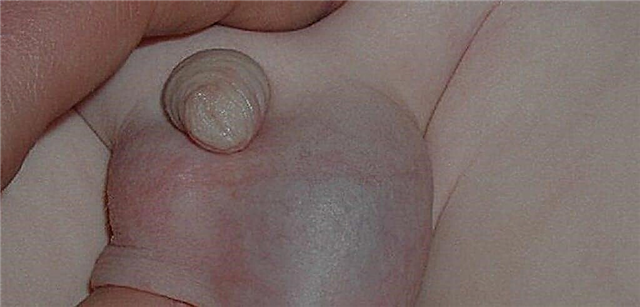
Diagnostic procedures
They play a major role in the diagnosis and treatment choice!
To diagnose dropsy of the testicular membranes, it is necessary to correctly collect an anamnesis of the disease, complaints, anamnesis of life (to find out the past diseases, as well as the presence in the past of injuries, operations, inflammatory processes in the groin area), obstetric-gynecological history, to find out the hereditary predisposition to this disease.
The diagnostic methods of hydrocele include diaphanoscopy. Using a flashlight in a darkened room, it is assessed how light passes through the scrotum. With dropsy of the testicular membranes, the groin in boys becomes pink. But if there is pus or hernia, there is no “pink glow”.
Making a diagnosis for a pediatrician, surgeon, urologist, andrologist is not difficult.
Visual signs
During examination of the scrotum, it can be enlarged (swollen) on one or two sides, compacted, hyperemic (in the presence of an acute inflammatory process). The skin over the formation is mobile. The form of the seal can be pear-shaped (elongated and slightly pointed), as well as in the form of an "hourglass" (when liquid enters the inguinal canal). The baby may have one or both testicles deformed.
Complaints such as discomfort, pain and fever can be formidable symptoms indicating an infection in the case of advanced dropsy of the testicle.
The diagnosis should be made exclusively by a doctor!
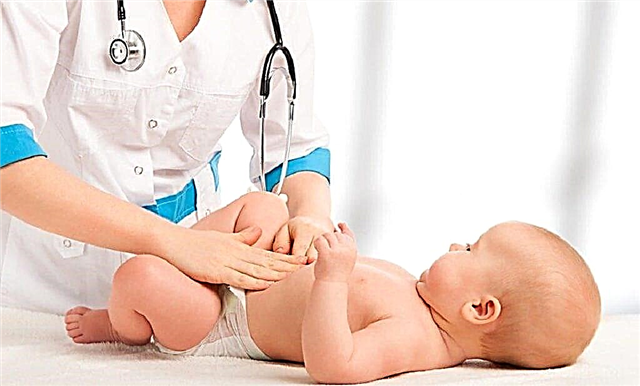
Instrumental diagnostic methods
In the modern world, diaphanoscopy has become quite rare, thanks to the advent of an ultrasound apparatus and a magnetic resonance imaging machine. The most reliable is the result obtained from these diagnostic studies.
Ultrasound diagnostic examination of the scrotum assesses the localization of the disease, the volume of fluid, the condition of the testicles and their appendages.
Magnetic resonance imaging examines the organs and tissues of the scrotum in layers.
What diseases should not be confused with?
Differential diagnosis of this pathology must be carried out with:
- neoplasms (malignant and benign) of the testicle, spermatic cord;
- varicocele;
- orchitis;
- piocele;
- accumulation of fluid in the spermatic cord;
- epididymo-orchitis;
- inguinal and inguinal-scrotal hernia;
- cystic formations of the testicle, as well as the spermatic cord;
- hematocele.
Identifying a hydrocele in adolescence is quite problematic, as many adolescents are embarrassed to tell "these things" to their parents. And therefore, most often it is detected during routine preventive examinations, but some of them are already in a neglected form.
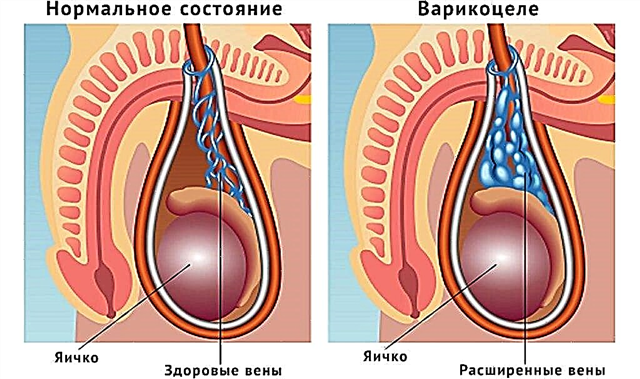
Possible complications of dropsy of the testicle
With timely treatment, they rarely occur.
Hydrocele can be complicated by:
- atrophy of the testicle or testicles (it / they decrease in size, as a result of which the production of male sex hormones and spermatogenesis are disrupted);
- infertility;
- Difficulty urinating may occur (this occurs when a significant amount of fluid accumulates in the scrotum);
- pyocele (this happens when the watery fluid becomes infected and becomes purulent).
Treatment approaches
Therapy for dropsy of the testicular membranes is differentiated depending on its genesis and the nature of the disease.
The age of the patient and the presence of concomitant diseases play an important role in the choice of treatment.
Surgical interventions. As a rule, babies under one year old are not performed (until this age, the child must be under the supervision of a surgeon), since it can pass on its own. But if fluid accumulates in the scrotum and tension appears in the testicular membranes, then it is necessary to puncture and remove the contents (in some cases it has to be done repeatedly, since the aqueous humor can collect repeatedly).
If the child has a communicating dropsy with a narrow peritoneal process, it is necessary to be under the supervision of a surgeon until the age of two.
It is allowed to carry out surgery if the baby has:
- communicating hydrocele and the child is two years old;
- communicating dropsy of the membranes of the testicles, but the baby is from one to two years old (in the case of a combination of dropsy and inguinal hernia, when the volume of the scrotum changes due to a change in posture (dropsy increases and discomfort increases), joining of the infectious process);
- post-traumatic hydrocele and after three to six months there is no improvement.
There is no drug therapy for dropsy of the membranes of the testicles. The main radical method of treatment is surgical.
If the baby has a traumatic hydrocele and the integrity of the testicle is not violated, then he should be observed by a specialist for no more than three to six months and, in case of negative dynamics, he needs to undergo surgical treatment.
If the symptoms persist after the boy reaches two and a half years, he must undergo surgery, as this is fraught with the development of infertility!
Preparing for surgery
Before surgery, the patient needs preparatory measures for it.
The list of analyzes and instrumental studies required for the operation depends on age. Adults, for example, need to have a general blood test, urine test, blood clotting test, a chest x-ray, an electrocardiogram. And also pass tests to exclude HIV infection, syphilis, hepatitis.
A prerequisite for surgical intervention is a satisfactory condition of the baby (after viral infections, at least one month should pass).
Before the operation (if it is an adult man or teenager), he should shave the hair in the groin area and wash well. If the patient is a child, then the parents should wash the genitals of the baby. On the day of surgery, it is forbidden to eat food.
The essence of the operation
There are 3 types of surgical correction of the described condition. They were suggested:
- Winckelmann. The essence of the method consists in dissecting the sheets of the testicle shell, one of which is turned out from behind and sutured;
- Bergman (excision of the shell sheet is performed, followed by suturing of the remaining fragment);
- Lord (all the membranes are opened, the accumulated exudate is removed and the dissected tissues are corrugated with special sutures).
Postoperative period
This period for hydrocele is several weeks. At this time, the wound should be clean and dry. Wear tight underwear to reduce the risk of swelling.
In the event of bleeding, pain, inflammation, you must call an ambulance or inform your doctor.
What restrictions does a baby need after surgery?
In the postoperative period, the child is prohibited from:
- touch the wound with your hands so that it does not become infected;
- receive any physical activity;
- visit the sauna, swimming pool (allowed only after 5 - 6 weeks).
Complications of surgical treatment
After surgery, the following complications may occur, for example:
- diverge seams;
- swelling of the scrotum;
- get infected with the wound;
- re-accumulate fluid;
- a hematoma to form;
- testicles atrophy.
Is treatment with alternative methods appropriate?
Therapy with alternative methods should not be performed, since it does not have a special effect, like drug treatment. If the hydrocele does not go away on its own, it is necessary to operate on the patient.
Do not jeopardize the health of your son and treat your child correctly! Distracted by folk methods, you can not only waste time, but also harm him.
Forecast
With physiological hydrocele, the prognosis is almost 100% favorable.
If the baby has had the correct surgery, and he followed all the recommendations of the specialist, then the prognosis is almost always favorable.
Prevention of the condition
To prevent hydrocele, you need:
- timely treat infectious diseases of the genitourinary system;
- avoid hypothermia and groin injuries;
- visit a doctor according to professional examinations, and if necessary - more often;
- when the first symptoms appear, consult a specialist.
Conclusion
Dropsy of the membranes of the testicles is a very insidious disease, as it can be both physiological and acquired. And in order to differentiate it, the consultation of a specialist is imperative. And only after timely diagnosis and the appointment of surgery, you can get rid of this ailment.
It is important to remember that parents should immediately inform the pediatrician or surgeon about the slightest changes in the condition of the baby with hydrocele. Do not "delay" and contact the specialists on time! Then you can achieve the best effect and save your baby from the most adverse consequences. Take care of the health of your sons! Do not be ill!


